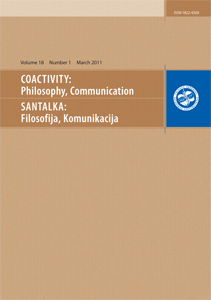Kūrybos ekonomikos penkiakampis
A Pentagon of Creative Economy
Author(s): Rasa Levickaitė, Ramojus ReimerisSubject(s): Philosophy
Published by: Vilnius Gediminas Technical University
Keywords: creative economy; creative industries; creative class; creative city; creative identity
Summary/Abstract: The article presents five concepts of the creative economy based on creative economy theories and interpretations developed by five authors. John Howkins interpretation is based on the theory that the creative economy consists of fifteen creative industries (classified by the author). The creativity and economics is nothing new, but new is the relationship between them in its nature and extent. Broad interpretation of creativity led to the theory of creative class developed by Richard Florida. The creative class is a group of professionals, scientists and artists, whose existence creates economic, social and cultural dynamism, especially in urban areas. Richard Caves characterizes creative industries by seven economic properties and states that creative industries themselves are not unique, but sectors of the creative industries which are driven by creativity generate new approaches to business processes, new product supply and demand both in terms of economic and socio-economic development indicators of countries. Charles Landry has developed a concept of the creative city. The author argues that cities have the single most important resource – its people. Creativity substitutes the location, natural resources and access to the market, becoming a key engine in the dynamic growth of the city. This term is used to define a city where varied cultural activities are an integral part of economic and social functioning of the city. A theory developed by John Hartley is based on the concept of creative identities. The main factors behind the rapid growth of the creative industries worldwide are connected both to the technology and the economy. Digital revolution and economic environments in which this revolution took place has caused technological and communicational changes which have merged creating the conditions for the development of the creative economy.
Journal: Santalka: Filologija, Edukologija
- Issue Year: 19/2011
- Issue No: 2
- Page Range: 83-91
- Page Count: 9
- Language: Lithuanian

